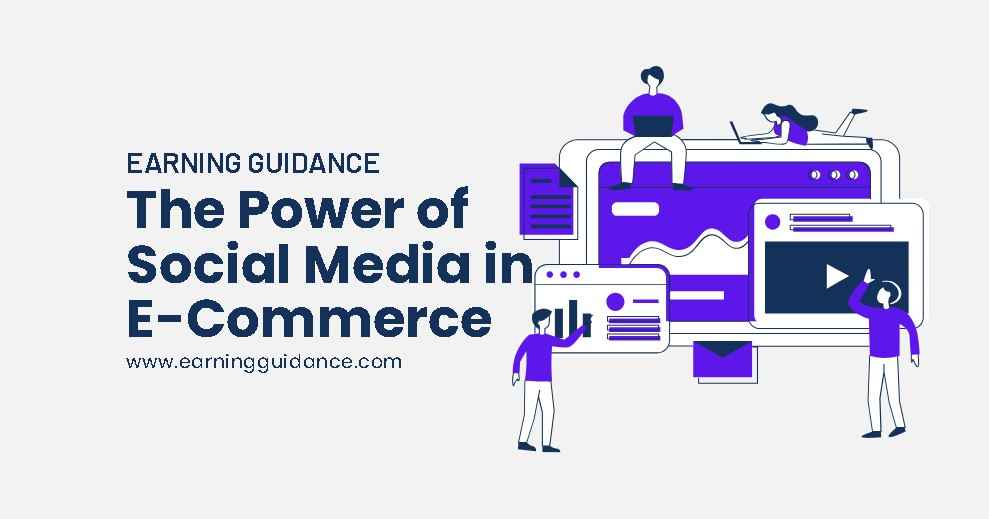Table Of Contents
- 1 Introduction
- 2 Understanding E-Commerce Fulfillment
- 3 Fulfillment Options for E-Commerce Businesses
- 4 Key Considerations in E-Commerce Shipping
- 5 International Shipping in E-Commerce
- 6 Order Tracking and Customer Communication
- 7 Returns and Reverse Logistics
- 8 Warehouse Management Systems and Technology
- 9 Packaging and Sustainability in E-Commerce Shipping
- 10 FAQs
Introduction
In the world of e-commerce, fulfillment and shipping play a crucial role in the success of businesses. The efficient and timely delivery of products is essential to meet customer expectations and maintain a competitive edge. In this article, we will explore the importance of e-commerce fulfillment and shipping processes, understanding the key considerations involved, and strategies for effective implementation.
The Power of Social Media in E-Commerce: Best Practices and Case Studies
Understanding E-Commerce Fulfillment
E-commerce fulfillment refers to the entire process of receiving, processing, and delivering customer orders. It involves several components, including order processing, inventory management, and shipping. Here are the key points to understand:
- Order processing: This involves receiving and verifying customer orders, managing inventory availability, and preparing orders for shipment.
- Inventory management: Efficient management of inventory ensures accurate stock levels, preventing overselling or stockouts.
- Accurate picking, packing, and shipping: These steps are critical to ensure the correct products are selected, securely packed, and shipped to the customers in a timely manner.
For some external reference, You can visit UPS E-Commerce Fulfillment Solutions.
Fulfillment Options for E-Commerce Businesses
E-commerce businesses have several options for managing their fulfillment operations. Each option has its pros and cons, and it’s important to choose the most suitable one for your business. Let’s explore the options:
- In-house fulfillment: Managing fulfillment internally gives businesses greater control over the entire process. Pros include maintaining brand integrity and direct customer interaction. However, it requires significant investments in infrastructure, resources, and expertise.
- Third-party logistics (3PL): Outsourcing fulfillment to a 3PL provider offers numerous benefits, such as reduced operational burden, scalability, and access to expertise and infrastructure. However, it involves relinquishing some control over the fulfillment process.
- Fulfillment by Amazon (FBA): FBA allows sellers to leverage Amazon’s extensive fulfillment network. Amazon handles storage, picking, packing, and shipping of products, enabling businesses to focus on other aspects. FBA is particularly advantageous for businesses selling on the Amazon platform.
- Dropshipping: Dropshipping is a model where the seller doesn’t hold inventory. Instead, when a customer places an order, the supplier directly ships the product to the customer. This eliminates the need for upfront inventory investment but may have limitations in terms of product variety and control.
Key Considerations in E-Commerce Shipping
Shipping is a critical aspect of e-commerce fulfillment. It involves careful considerations to ensure timely and cost-effective delivery. Here are the key factors to consider:
- Packaging and shipping materials: Selecting appropriate packaging materials based on the nature of the products, considering factors such as fragility, size, and weight. Using high-quality packaging materials ensures products are protected during transit.
- Shipping methods and carriers: Comparing different shipping options and carriers to find the most suitable ones for your business needs. Consider factors such as speed, reliability, tracking capabilities, and cost-effectiveness.
- Shipping costs and pricing strategies: Understanding the factors that impact shipping costs, including weight, dimensions, destination, and delivery speed. Implementing pricing strategies that balance customer expectations and shipping expenses.
E-Commerce Payment Gateways – Choosing the Right Solution for Your Business
International Shipping in E-Commerce
Expanding into international markets opens up new opportunities for e-commerce businesses. However, international shipping presents unique challenges. Consider the following points:
- Challenges and considerations: International shipping involves navigating complex customs regulations, varying tax and duty requirements, and longer transit times. Businesses need to be aware of these challenges and plan accordingly.
- Customs, duties, and taxes: Understanding the customs clearance process, duty rates, and tax obligations of different countries is crucial. This includes providing accurate product descriptions and values, as well as managing any necessary paperwork.
- International shipping strategies: Implementing effective strategies for international shipping, such as partnering with international carriers, offering multiple shipping options, and providing clear communication to customers regarding potential delays and costs.
Order Tracking and Customer Communication
Keeping customers informed about their order status and providing a seamless communication experience is vital for customer satisfaction. Consider the following aspects:
- Importance of order tracking: Order tracking allows customers to monitor the progress of their shipments, providing transparency and peace of mind. It reduces customer inquiries and fosters trust in the business.
- Implementing tracking systems: Integrate tracking systems into your e-commerce platform to automate order status updates. This helps streamline the process and provides real-time information to customers.
- Excellent customer communication: Proactive and clear communication at every step of the shipping process helps manage customer expectations. Send shipment notifications, provide contact information for inquiries, and address customer concerns promptly.
Creating a Winning E-Commerce Marketing Plan: Step-by-Step Guide
Returns and Reverse Logistics
Returns are an inevitable part of e-commerce. Efficiently managing product returns and processing refunds is crucial for customer satisfaction and business reputation. Consider the following:
- Managing product returns: Implement clear and customer-friendly return policies that are easy to understand and follow. Establish a streamlined process for receiving, inspecting, and processing returned items.
- Effective return policies and procedures: Ensure a hassle-free returns experience for customers by providing pre-paid return labels, offering options for exchanges or refunds, and promptly processing returns upon receipt.
- Optimizing reverse logistics: Reverse logistics refers to the process of handling returned items. Optimize this process by implementing efficient inventory management, refurbishment or restocking strategies, and minimizing costs associated with returns.
Warehouse Management Systems and Technology
Warehouse management systems (WMS) and technology play a crucial role in optimizing fulfillment operations. Consider the following points:
- Overview of warehouse management systems (WMS): WMS software helps businesses manage inventory, track orders, and optimize warehouse operations. It provides real-time visibility into inventory levels, improves order accuracy, and streamlines fulfillment processes.
- Utilizing automation and technology: Embrace technologies such as barcode scanning, RFID tracking, and automation to improve efficiency, reduce errors, and enhance overall productivity in the warehouse.
- Warehouse optimization strategies: Implement strategies to optimize warehouse layout, picking and packing processes, and inventory management. This includes analyzing data, optimizing storage configurations, and leveraging technology to achieve operational excellence.
Mastering E-Commerce SEO: Boost Your Store’s Visibility on Search Engines
Packaging and Sustainability in E-Commerce Shipping
As businesses become more environmentally conscious, sustainable packaging practices are gaining importance in e-commerce. Consider the following:
- Importance of sustainable packaging: Sustainable packaging reduces environmental impact, aligns with customer values, and enhances brand reputation. It demonstrates commitment to eco-friendly practices.
- Sustainable packaging options and materials: Explore eco-friendly packaging materials such as recycled and biodegradable options. Optimize packaging sizes to minimize waste and use packaging that is easy to recycle.
- Strategies for reducing waste: Implement strategies like right-sizing packages, using void-fill materials efficiently, and promoting recycling initiatives to reduce waste and promote sustainable shipping practices.
E-Commerce Trends to Watch Out for in 2023
FAQs
Q1. What is e-commerce fulfillment? E-commerce fulfillment refers to the entire process of receiving, processing, and delivering customer orders in the context of online retail.
Q2. What are the benefits of outsourcing fulfillment? Outsourcing fulfillment to third-party logistics providers (3PLs) offers benefits such as reduced operational burden, access to expertise and infrastructure, scalability, and cost-efficiency.
Q3. How do I calculate shipping costs for my e-commerce business? Shipping costs depend on factors such as package weight, dimensions, destination, shipping method, and carrier. Use shipping calculators or consult with carriers to estimate shipping costs accurately.
Q4. What are the challenges of international shipping? International shipping involves navigating customs regulations, duties, taxes, and longer transit times. It requires understanding different country-specific requirements and potential language barriers.
Q5. How can I handle returns and refunds efficiently in e-commerce? Efficient returns management involves implementing clear return policies, providing prepaid return labels, streamlining return processing, and optimizing reverse logistics processes for prompt refunds or exchanges.













Wow! Your blog post blew me away! Your ability to dissect complex topics and present them in a relatable, no-nonsense way is simply genius. Allow me to share with you and your audience about my first-hand experience of this ultimate Giant Killer!